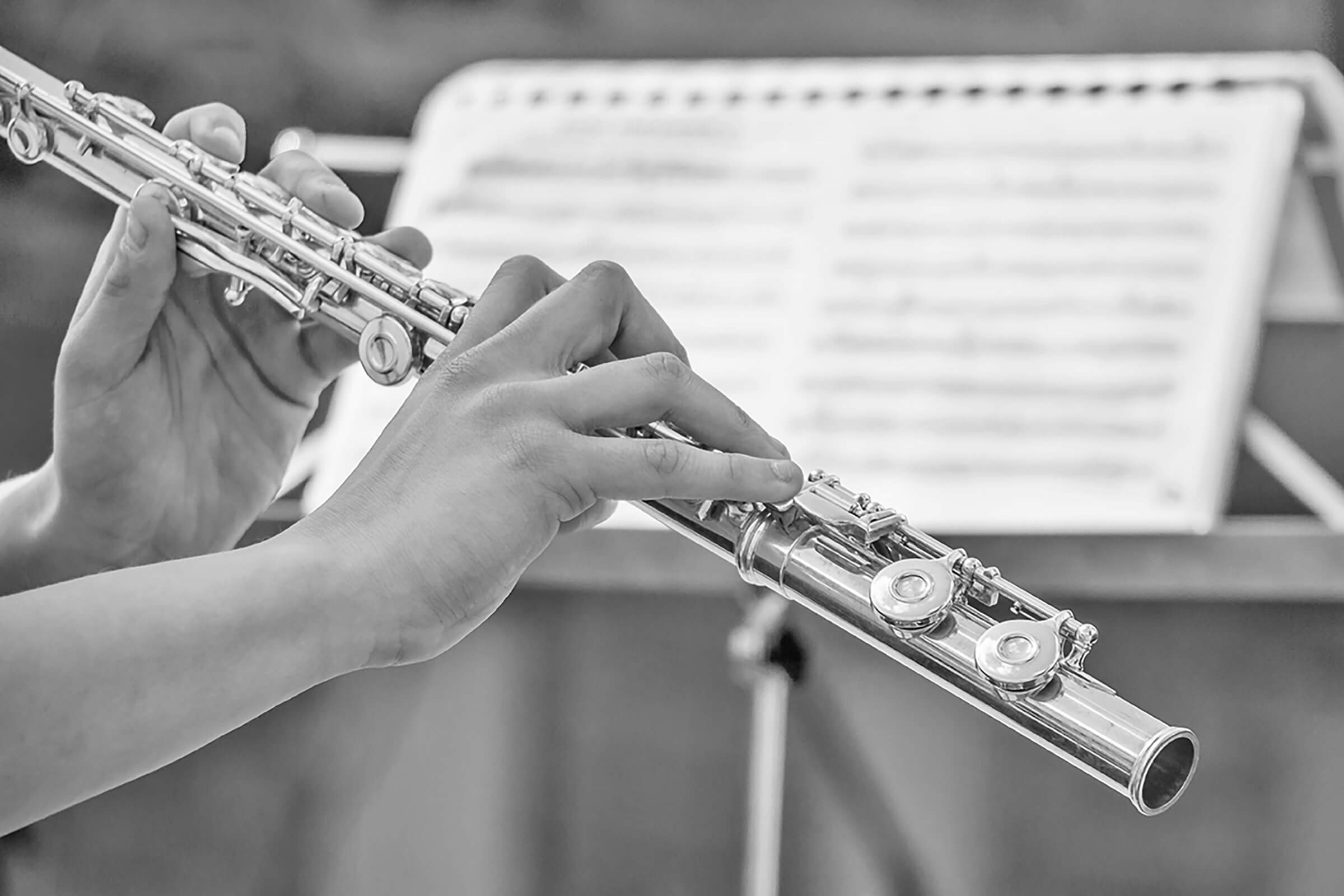
The Piano Defies Classification
What type of musical instrument is a piano? When a piano is played, each key controls a hammer that strikes a tuned string inside, which puts it in a uniquely complicated category. The sound resonates from strings, making it a stringed instrument like a harp or a guitar — but the action that produces the sound is a strike, putting it in the percussion category, along with other melodic instruments like the xylophone or steel drum.
Since it actually doesn’t have to be one or the other, pianos are largely considered to be both a percussion and stringed instrument. Both describe how the piano works. Some consider the piano to be a form of hammered dulcimer, another hammered-string instrument that’s hard to pin down. It’s also a keyboard instrument, which are never just keyboard instruments alone — that would also include the pipe organ (wind), harpsichord (string), glockenspiel (percussion), and synthesizer (electronic).

The World’s Biggest Known Tubas Weigh at Least 100 Pounds
There are at least six extant contenders for the world’s largest tuba, depending on which measurement you’re using — and while they were all built as novelties, some are more functional than others. The most recent giant tuba is perhaps the most functional: It’s around 110 pounds and just under 7 feet tall, and yet someone managed to play “Flight of the Bumblebee” on it. Twenty different German instrument makers collaborated to create it in 2010.
Giant tubas don’t come around too often: The rest are more than a century old, unless someone is hiding a big brass masterpiece in an attic somewhere. They include the 100-pound, 8-foot-tall Big Carl, a former display piece for the Carl Fisher music store in Manhattan. It has no valves, but can produce some rumbling notes.
In a Harvard University basement, the King Tuba, possibly commissioned by John Philip Sousa, is about 7 feet tall and 100 pounds. It was restored in 2019 and occasionally makes appearances at performances.
Like Big Carl, the “gilded monster bass,” a former sign outside the Besson & Co. brass instrument factory, has no functioning valves but can play a few notes. That one lives at the Horniman Museum & Gardens in London, is around 6.5 feet tall, and weighs in at around 110 pounds. A similarly-sized tuba was used by tuba player and humorist Gerard Hoffnung for a 1956 performance and is now apparently in a private collection.
Yet another tuba, the Reisen-Kontrabass, is in storage at the Amati instrument factory in the Czech Republic. It’s around 8 feet tall and weighs more than 115 pounds!
None of them compares to the size of the earliest known subcontrabass tubas, one by Adolphe Sax and the other by Gustave Besson. Both of them were on display at exhibitions in 19th-century Paris, but neither of them survives today.

A Classical Album Introduced the World to Synthesizers
The synthesizer was popular in experimental music and sound effects before 1968, but it took a collection of Johann Sebastian Bach music to propel it into the mainstream. Released at the end of that year, the groundbreaking album Switched On Bach, by electronic music pioneer Wendy Carlos, used a Moog synthesizer to show mainstream music fans and executives alike that the technology had more universal applications.
“Bach seemed to be an ideal type of music to use,” Carlos explained in an interview. The multi-track recorder allowed her to layer the melodies, she said, and Bach’s music used only one note at a time, which accommodated the limits of the synthesizer back then. “It was the perfect marriage of the right technology, the right techniques,” she noted.
The album features 10 compositions by Bach, and won multiple Grammy Awards in 1970: Classical Album of the Year, Best Classical Performance by an Instrumental Soloist, and Best Engineered Recording, Classical. Its follow-up, The Well-Tempered Synthesizer, was nominated for two.
Even if you’re not familiar with Carlos, who has also released albums of original works, you may have heard her music in the chilling scores for A Clockwork Orange and The Shining.
More Interesting Reads

Leo Fender Didn’t Play Guitar
Fender is one of the most popular guitar and amplifier brands, perhaps best known for its enduring classic the Stratocaster electric guitar. The founder’s interest and expertise, however, was solidly in creation, not performance. Before founding his company and inventing the first mass-produced solid-body electric guitar, Leo Fender was a radio repairman who sometimes tinkered with his musician friends’ instruments. When he started actually creating them, he relied heavily on their feedback during development.
While he briefly played piano and saxophone as a youth, even after decades in the guitar business, he never actually learned how to play the instrument. Legend has it that he couldn’t even tune one. He was too busy tinkering with them: Country music guitarist Bill Carson (who has been dubbed the “test pilot of the Stratocaster”) told Reverb that Fender would show up to his gigs to swap out equipment.
“Leo would visit the clubs pretty often where I was working, and sometimes he would bring another amplifier in at that time and want me to exchange it for the one that I had,” he recalled. “He’d take the other one, and take it back to the shop sometimes in the middle of the night to work on it. I just never knew anybody that was as involved in what they were doing and [lived] it 24 hours a day.”

The Oldest Known, Near-Complete Flute is 35,000 Years Old
Flutes were among the earliest musical instruments, and were present in ancient cultures throughout the world. The oldest one that modern archaeologists have discovered so far is 35,000 years old, uncovered in the Hohle Fels Cave near Ulm, Germany. It was created in the middle of the last Ice Age.
The flute, which was found in 2008, is made of griffon vulture bone and in excellent condition. Researchers were even able to produce a modern copy of the instrument to figure out how it might have sounded, which you can listen to here.

Two Massive Organs Are Played By Waves
At least three large-scale, interactive art installations have greeted visitors with music made by the waves and tides — and two of them survive today.
The Wave Organ by Peter Richards and George Gonzalez was built in 1986 on a jetty made from material from a demolished cemetery. Twenty-five PVC organ pipes are scattered at varying heights above the water, and make sound when the waves hit them below. The best time to visit is during high tide, when higher waves create more frequent notes.
Another example, the Sea Organ in Zadar, Croatia, by Nikola Bašić, was constructed in 2005 on a new jetty for receiving cruise ships. In this case, the tubes run beneath a series of steps descending into the water. Thirty-five polyethylene pipes use the motion of the tide to create tones from hollowed-out squares at the base of the steps along nearly 230 feet of waterfront; the sounds change the farther you travel along the jetty. Similar to the Wave Organ, when the tide is low, the sounds are more subtle, becoming more lively as the tide gets higher.
A third, the High Tide Organ by Liam Curtin and John Gooding in Blackpool, England, was torn down in late 2021. Curtin, who said he was doing some repairs himself, called for its demolition, citing neglect — but considering it outlasted its planned lifespan by several years, it had a good run. The metal structure, completed in 2002 as part of a larger sculpture installation along the seafront promenade, was a single, tall steel sculpture that hooks at the top. A series of valves beneath organ pipes were manipulated by the high tide below, with the metal creating a more whistle-like sound than the large-scale plastic installations.












